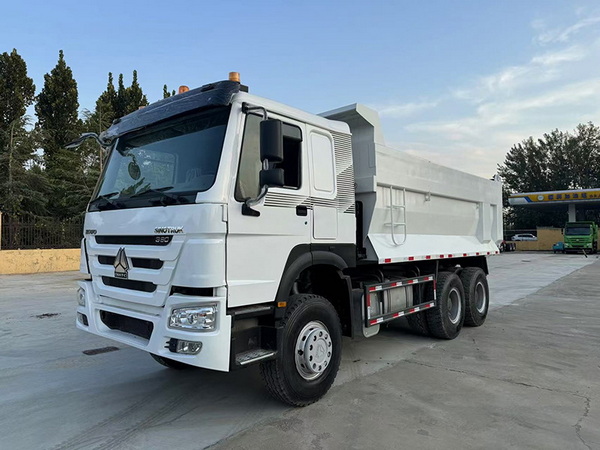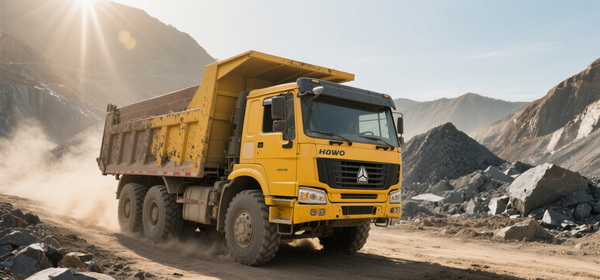Views: 222 Author: Amanda Publish Time: 2025-10-18 Origin: Site








Content Menu
● Understanding Dump Trucks and Their Uses
>> Common Types of Dump Trucks
● What Is a Commercial Driver's License (CDL)?
● Do You Need a CDL to Drive a Dump Truck?
● How to Obtain a CDL for Driving Dump Trucks
● Safe Driving Practices for Dump Truck Operators
● Maintenance Essentials for Dump Trucks
● Legal Considerations and Licensing Differences Worldwide
● Frequently Asked Questions (FAQ)
>> 1. Do you need a CDL to drive a dump truck under 26,000 pounds?
>> 2. What are the key tests for getting a CDL for dump trucks?
>> 3. Can I drive a dump truck without experience?
>> 4. Are there endorsements required for dumping hazardous waste?
>> 5. What are the most common safety hazards for dump truck drivers?
Driving a dump truck is a vital role in construction, mining, and transportation industries, responsible for moving heavy loads like soil, gravel, and construction debris efficiently and safely. If you are considering operating a dump truck or are curious about what licenses are necessary, this article provides an in-depth guide covering dump truck types, licensing requirements—especially regarding Commercial Driver's Licenses (CDLs)—driving tips, maintenance, and important safety considerations.

A dump truck is designed to transport and dump loose materials, making it indispensable on building sites, mining operations, and during landscaping work. The flexibility of dump trucks comes from their ability to unload cargo by lifting their bed, usually by hydraulics.
- Standard Dump Trucks: These trucks have a hinge at the rear and a hydraulic ram to raise the front of the bed. They are most familiar in construction and municipal work.
- Articulated Dump Trucks: Featuring a pivot joint between the cab and the trailer, these trucks excel in rough terrain, such as quarries or mining sites.
- Transfer Dump Trucks: These consist of a tractor pulling one or more dumps, increasing carrying capacity.
- Side Dump Trucks: Instead of tilting backward, the bed tips sideways to unload to the vehicle's side, useful in restricted spaces.
- Super Dump Trucks: Equipped with an extra trailer axle for heavier loads, these trucks can carry more weight legally.
Each of these types requires different knowledge and sometimes different licenses depending on their size and load.
A Commercial Driver's License (CDL) certifies drivers to operate heavy or specialized vehicles, ensuring they have passed knowledge and skills tests relevant to commercial vehicle operation. CDLs are classified to reflect the type and weight of vehicles a driver is permitted to operate.
- Class A CDL: For combination vehicles with a gross combination weight rating (GCWR) over 26,001 pounds, such as tractor-trailers.
- Class B CDL: For single vehicles with a GVWR over 26,001 pounds, which includes most dump trucks.
- Class C CDL: For vehicles designed to transport 16 or more passengers or hazardous materials.
Most dump trucks fall under Class B due to their size and weight. Different states and countries have their own variations and requirements.
Typically, you will need a CDL if the dump truck meets certain criteria.
- Dump trucks with a Gross Vehicle Weight Rating (GVWR) of 26,001 pounds or more require at least a Class B CDL in the U.S.
- Operating smaller dump trucks below this weight often only requires a standard driver's license, but rules vary by location.
- If transporting hazardous materials, a special endorsement on the CDL may be necessary.
- Some jurisdictions require you to pass additional training or obtain specialized endorsements for certain dump truck operations.
For example, in 中国, commercial vehicle licenses similar to a CDL are mandatory for heavy trucks over specified weights, while in the U.S., federal and state regulations govern CDL requirements with strict testing and endorsement criteria.

Getting a CDL involves multiple steps designed to ensure you can safely handle a heavy vehicle:
1. Age and Medical Qualification: You usually must be at least 18 years old for intrastate driving and 21 for interstate travel. A Department of Transportation (DOT) physical exam verifies you meet health standards.
2. Study for the Knowledge Test: The test covers vehicle operation, safety protocols, and federal/state regulations.
3. Get a Learner's Permit: Passing the knowledge test grants a permit that lets you practice driving under supervision.
4. Pass the Skills Test: Includes a pre-trip vehicle inspection, basic control skills, and on-road driving, often with a commercial examiner.
5. Get Additional Endorsements: If transporting hazardous materials, passengers, or tank vehicles, you must pass additional tests.
Dump trucks require special handling due to their size, weight distribution, and cargo. Following these tips can lower risks:
- Always perform a thorough pre-trip inspection, checking brakes, hydraulics, tires, and the bed-lifting mechanism.
- Ensure the dumping area is stable and firm to prevent tipping.
- Avoid overloading; sticks to manufacturer-recommended maximum weights.
- Be mindful of large blind spots, and use mirrors and signals consistently.
- Reduce speed on uneven or slippery surfaces.
- Communicate clearly with ground crew during dumping operations.
- Be aware of local dump site rules and environmental restrictions.
Well-maintained trucks reduce downtime and increase safety. Basic maintenance steps include:
- Checking hydraulic fluid levels and inspecting cylinders and hoses.
- Performing routine oil changes and monitoring brake fluid.
- Keeping tires inflated properly with adequate tread depth for traction.
- Testing lights, signals, and electrical components frequently.
- Lubricating dump bed hinges regularly.
Neglecting maintenance increases the risk of mechanical failure, which is dangerous given dump trucks' essential functions on busy job sites.
Licensing rules differ widely between regions:
- In the U.S., the CDL system is standardized federally but enforced by individual states, with specific endorsements for hazardous materials (HazMat), tankers, or passenger transport.
- In China, the licensing system requires a commercial license for large vehicles, roughly equivalent to a CDL, with additional certificates for special cargo.
- In the European Union, a category D driving license covers heavy vehicles like dump trucks, with subcategories depending on vehicle size.
Before operating a dump truck in any jurisdiction, always check local transportation authority regulations to ensure compliance.
Operating a dump truck requires a combination of proper licensing, skills, safety awareness, and vehicle maintenance. In most cases, especially for trucks over 26,000 pounds GVWR, a CDL—usually Class B—is mandatory. Drivers must comply with their region's laws and invest in continuous training to ensure the safe and efficient performance of their duties. Dump trucks are essential vehicles, and responsible operation protects lives and resources on every job site.

Typically, no CDL is required if the dump truck's weight is below 26,001 pounds. However, you should verify local regulations.
Applicants must pass a written knowledge test and a skills test comprising a pre-trip inspection, basic vehicle operation, and on-road driving.
It is strongly recommended to gain experience with supervision and training. In many places, you cannot operate large dump trucks unsupervised without a valid CDL.
Yes, a HazMat endorsement is required if the dump truck transports hazardous materials, involving background checks and extra tests.
The top hazards include vehicle tip-overs when dumping, blind spots leading to collisions, equipment failures, and overloading.